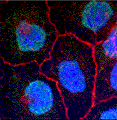Biochemistry, Department of
Document Type
Article
Date of this Version
9-2018
Citation
PLoS One (September 27, 2018) 1: 20
doi: 10.1371/journal.pone.0204505
Abstract
Algae are often promoted as feedstock organisms to produce a sustainable petroleum fossil fuel alternative. However, to induce lipid accumulation most often requires a severe stress that is difficult to induce in large batch cultures. The objective of this study is to analyze and mathematically model heat stress on growth, chlorophyll content, triacylglyceride, and starch synthesis in algae. We initially screened 30 algal species for the most pronounced induction of lipid droplets from heat stress using confocal microscopy and mass spectroscopy techniques. One species, Coccomyxa subellipsoidea C169, was selected and subjected to further biochemical analyses using a jacketed bioreactor amended with 1% CO2 at 25ÊC, 30ÊC, 32ÊC, 33ÊC, 34ÊC, 35ÊC, and 36ÊC. Lipid and starch accumulation was less extreme than N stress. Growth was reduced above 25ÊC, but heat stress induced lipid droplet synthesis was negatively correlated with growth only past a demonstrated threshold temperature above 32ÊC. The optimal temperature for lipid accumulation was 35ÊC, which led to 6% of dry weight triglyceride content and a 72% reduction from optimal growth after 5 days. Fatty acid influx rates into triglycerides and 15N labeling of amino acids and proteins indicate that heat stress is mechanistically distinct from N stress. Thus, this study lends support to a novel hypothesis that lipid droplet triglycerides result from a redistribution of carbon flux as fatty acids to neutral storage lipids over membrane or other lipids.
Included in
Biochemistry Commons, Biotechnology Commons, Other Biochemistry, Biophysics, and Structural Biology Commons


Comments
Copyright 2018, the authors. Open access
License: CC BY 4.0